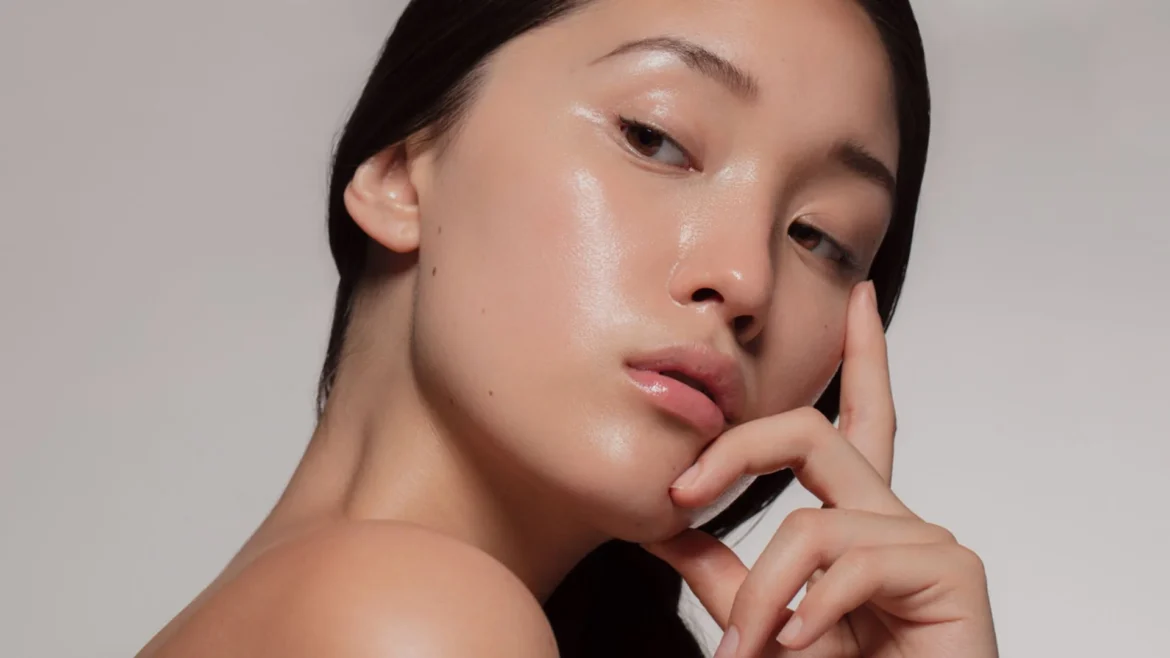When Glow Became an Act of Self-Care
The global adoption of glass skin coincided with another shift: a move away from quick-fix products and toward slower, ritual-based beauty.
While the West once idolised instant results — exfoliate today, glow tomorrow — glass skin taught a new patience. It’s not about transformation overnight; it’s about consistency, balance, and respect for the skin’s natural rhythm.
Even the process itself feels meditative. Patting layers of essence into your face forces you to slow down, to notice texture and temperature, to engage your senses. For many, it became a quiet form of therapy — a way to anchor oneself in the middle of digital chaos.
And perhaps that’s part of its universal appeal. Glass skin isn’t just about looking luminous; it’s about feeling restored.
The Glow Economy
Of course, no beauty movement exists in a vacuum. The glass-skin phenomenon has transformed the skincare industry, inspiring thousands of new products, from jelly-textured serums to “dewy finish” foundations designed to mimic bare skin.
In London, department stores now dedicate entire counters to hydration-based skincare. Ingredients like niacinamide, snail mucin, and fermented extracts — once considered exotic — are now household names. Even established Western brands are re-engineering their ranges to deliver that elusive inner glow.
Meanwhile, social media platforms have turned the glow into currency. Influencers film themselves under natural light, the sun catching the high points of their cheekbones, their foreheads luminous, captions boasting “no filter needed.” The appeal is powerful: glass skin signals effort, discipline, and the rare modern privilege of rest.
It’s not about status in the old sense — expensive handbags or designer heels — but about the luxury of health and time.
Real Skin, Real Balance
Yet even this gentle aesthetic has faced its own criticism. Some argue that the glass-skin ideal sets unrealistic expectations — that it celebrates flawlessness in a way that can feel unattainable. After all, most people have texture, pores, freckles, or minor imperfections that can’t (and shouldn’t) disappear.
But the newer, Western interpretation of glass skin is evolving toward something more inclusive: healthy transparency rather than impossible smoothness. It’s no longer about being poreless; it’s about being balanced, hydrated, and at ease in your own skin.
Dermatologists stress that everyone’s “glass” looks different. For some, it’s a subtle sheen; for others, a dew-soaked radiance. The goal isn’t replication — it’s harmony.
The Ingredients That Made It Possible
To achieve the glass-skin effect, certain ingredients have become indispensable. Hyaluronic acid remains the hydration hero — capable of holding up to 1,000 times its weight in water. Niacinamide evens tone and strengthens the barrier, while ceramides lock in moisture.
Antioxidants like green tea, centella asiatica (also known as cica), and ginseng help calm inflammation and defend against pollution. And mild exfoliants — lactic or polyhydroxy acids — remove dead cells without disrupting the delicate barrier beneath.
The secret, however, lies not just in the products but in how they’re used. The technique of layering — essence, serum, moisturiser, mist — builds translucency over time. The skin becomes a living lens, not because it’s coated, but because it’s nourished from within.
The Global Glow-Up
It’s fascinating how adaptable the trend has become. In colder European climates, glass skin often takes a slightly different form — less glossy, more “lit from within.” British beauty experts have coined terms like cloud skin or soft glow, celebrating diffused luminosity rather than a full mirror shine.
In tropical regions, meanwhile, people lean toward “glass skin lite” — keeping hydration but reducing richness to avoid excess oil.
This evolution shows how universal the desire for glow has become, yet how personal its expression remains. The idea of radiance has been redefined: not a fixed look, but a living spectrum of health and self-awareness.
Why the Glow Endures
In a world of filters, artificial lighting, and AI-generated perfection, glass skin stands out precisely because it feels real. It celebrates skin that breathes, moves, and lives.
The glow is no longer an accessory; it’s a statement. It says: I’m taking care of myself. Not for anyone’s approval, not for the camera, but because it feels good to look and feel alive in one’s own body.
That’s why, even as trends cycle through matte, shimmer, and sculpted looks, the glass-skin aesthetic endures. It’s adaptable, inclusive, and fundamentally human.
How to Achieve Your Own Version
Forget the strict 10-step routine. Modern glow seekers are focusing on three essentials: gentle cleansing, deep hydration, and protection. The rest is personal — perhaps a splash of facial mist throughout the day, or a few drops of face oil before bed.
The best advice? Listen to your skin. If it feels tight, feed it moisture. If it’s congested, pare back and let it breathe. True glow doesn’t come from doing more — it comes from doing what’s necessary, consistently, kindly.
The Light We Carry
In many ways, glass skin has become a metaphor for modern beauty itself. Transparent, reflective, ever-changing. It’s about clarity rather than perfection — about allowing your skin, and by extension yourself, to be seen as you are: luminous, layered, alive.
Perhaps that’s why the term “glass skin” endures even as trends evolve. It captures a simple truth that transcends products and routines: when your skin is healthy, hydrated, and cared for, it naturally reflects light — and life — back to the world.
So the next time you see that effortless glow in the mirror, remember — it’s not just skincare. It’s a quiet triumph of attention, patience, and self-respect. A glow earned, not painted.

